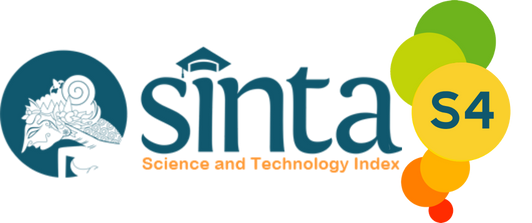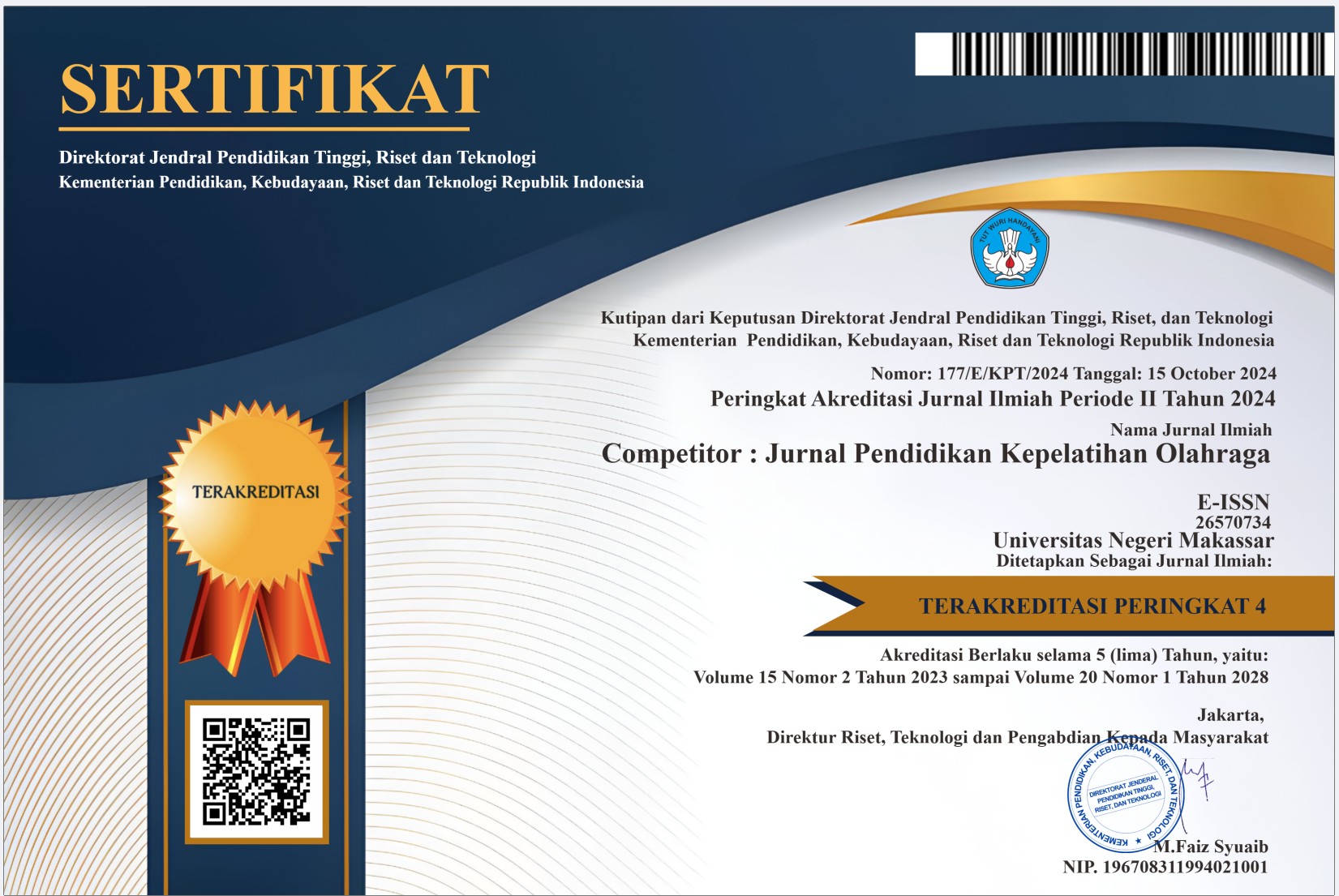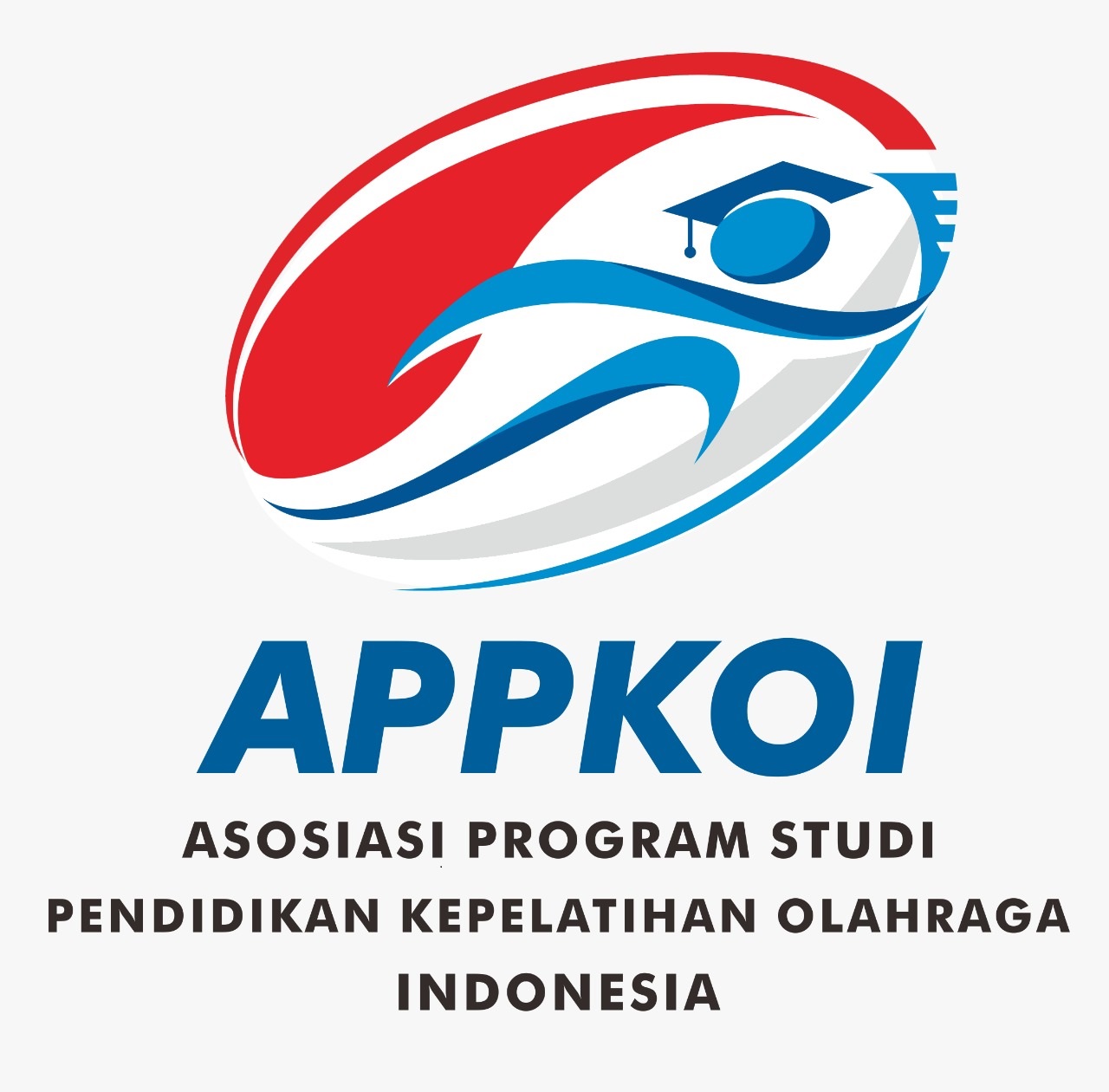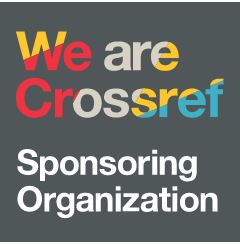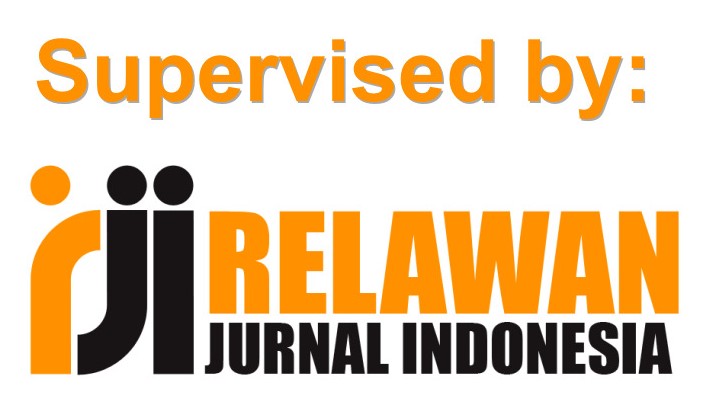Differences in Physical Education Learning Interests between Active and Inactive Students in Sports Extracurricular at SMK YPUP Makassar
DOI:
https://doi.org/10.26858/cjpko.v17i1.73644Keywords:
Interest in Learning, Physical Education, Sports Extracurriculars.Abstract
This study aims to determine the difference in interest in learning physical education between students who are active and inactive in sports and extracurricular activities at SMK YPUP Makassar. The approach of this research is quantitative with a comparative design. The sample consisted of 60 students who were divided into two groups, 30 active students and 30 students who were not active in sports extracurriculars. The sampling technique uses purposive sampling, which is to select students based on their involvement in sports and extracurricular activities. The instrument used in this study is a physical education interest and learning questionnaire that has gone through validity and reliability tests before being used. Data were analyzed using descriptive statistics and independent t-test tests. The results of the descriptive analysis showed that active students had an average learning interest score of 84.87 with a standard deviation of 5.02, while inactive students had an average of 66.50 with a standard deviation of 4.55. The results of the t-test showed that there was a significant difference between the two groups, with a significance value (p) of 0.000 (p < 0.05) and a mean difference of 18.367. The results of this study show that involvement in sports extracurricular activities is positively related to the level of interest in learning physical education. Therefore, schools need to encourage student participation in extracurricular activities as one of the strategies to increase interest in learning physical education subjects.References
Abduloh, S. P., Suntoko, M. P., Tedi Purbangkara, S. P., Ade Abikusna, M. P., & others. (2022). Peningkatan dan pengembangan prestasi belajar peserta didik. Uwais Inspirasi Indonesia.
Arifin, S. (2017). Peran guru pendidikan jasmani dalam pembentukan pendidikan karakter peserta didik. Multilateral: Jurnal Pendidikan Jasmani Dan Olahraga, 16(1).
Bailey, R. (2017). Sport, physical activity and educational achievement--towards an explanatory model. Sport in Society, 20(7), 768–788.
Cavaletto, G. M., & Miglietta, A. (2024). Cooperative and competitive learning as transformative factors of educational processes for extracurricular skill enhancement. Frontiers in Education, 9, 1388937.
Chen, S., Sun, H., Zhu, X., & Chen, A. (2014). Relationship between motivation and learning in physical education and after-school physical activity. Research Quarterly for Exercise and Sport, 85(4), 468–477.
Chuang, S. (2021). The applications of constructivist learning theory and social learning theory on adult continuous development. Performance Improvement, 60(3), 6–14.
Cortellazzo, L., Bonesso, S., Gerli, F., & Pizzi, C. (2021). Experiences that matter: Unraveling the link between extracurricular activities and emotional and social competencies. Frontiers in Psychology, 12, 659526.
Demchenko, I., Maksymchuk, B., Bilan, V., Maksymchuk, I., & Kalynovska, I. (2021). Training future physical education teachers for professional activities under the conditions of inclusive education. BRAIN. Broad Research in Artificial Intelligence and Neuroscience, 12(3), 191–213.
Goodyear, V. A., Skinner, B., McKeever, J., & Griffiths, M. (2023). The influence of online physical activity interventions on children and young people’s engagement with physical activity: a systematic review. Physical Education and Sport Pedagogy, 28(1), 94–108.
Gusmaneli, G., Junaidi, A. L., & Ranjani, N. (2024). Menggali Potensi Dalam Proses Pembelajaran Strategi Afektif untuk Meningkatkan Keterlibatan Siswa dan Kualitas Pembelajaran. Jurnal Kajian Penelitian Pendidikan Dan Kebudayaan, 2(3), 1–13.
Hatmoko, J. H. (2015). Survei minat dan motivasi siswa putri terhadap mata pelajaran penjasorkes di SMK Se-Kota Salatiga Tahun 2013. ACTIVE: Journal of Physical Education, Sport, Health and Recreation, 4(4).
Hellison, D., Wright, P. M., Martinek, T. J., & Walsh, D. S. (2025). Teaching personal and social responsibility through physical activity. Human Kinetics.
Hidayat, C., Rohyana, A., & Lengkana, A. S. (2022). Students’ perceptions toward practical online learning in physical education: a case study. Kinestetik: Jurnal Ilmiah Pendidikan Jasmani, 6(2), 279–288.
Iqbal, M. (2021). Peran PJOK Dalam Pembentukan Karakter Watak Anak. Prosiding Seminar Nasional Pendidikan Kepelatihan Olahraga, 1(2), 98–110.
Kpolovie, P. J., Joe, A. I., & Okoto, T. (2014). Academic achievement prediction: Role of interest in learning and attitude towards school. International Journal of Humanities Social Sciences and Education (IJHSSE), 1(11), 73–100.
Mulyana, A., An-Nazwa, F., Amanatin, I., Afifah, L. D. A., Handayani, S. R., Zikri, S. A., & Wati, T. A. (2024). Mengapa Olahraga Penting? Peran Pendidikan Jasmani, Olahraga, dan Kesehatan (PJOK) di Sekolah Dasar. Indo-MathEdu Intellectuals Journal, 5(3), 2763–2770.
Precillas, M. R. (2025). The Role of Extracurricular Sports Programs in Fostering Leadership and Teamwork Skills among High School Students. Journal of World Englishes and Educational Practices, 7(1), 37–73.
Rullestad, A., Meland, E., & Mildestvedt, T. (2021). Factors predicting physical activity and sports participation in adolescence. Journal of Environmental and Public Health, 2021(1), 9105953.
Saepudin, A., Ardiwinata, J. S., Akhyadi, A. S., & Rindiani, A. (2017). The influence of participation in extracurricular activities on learning motivation. Bandung Islamic University.
Syafruddin, M. A., Jahrir, A. S., Yusuf, A., & others. (2022). Peran pendidikan jasmani dan olahraga dalam pembentukan karakter bangsa. Jurnal Ilmiah STOK Bina Guna Medan, 10(2), 73–83.
Wallhead, T. L., Garn, A. C., & Vidoni, C. (2013). Sport Education and Social Goals in Physical Education: relationships with enjoyment, relatedness, and leisure-time physical activity. Physical Education and Sport Pedagogy, 18(4), 427–441.
Wintle, J. (2022). Physical education and physical activity promotion: lifestyle sports as meaningful experiences. Education Sciences, 12(3), 181.
Downloads
Published
Issue
Section
License
Copyright (c) 2025 Andi Sahrul Jahrir, Muhammad Ivan Miftahul Aziz (Author)

This work is licensed under a Creative Commons Attribution 4.0 International License.

